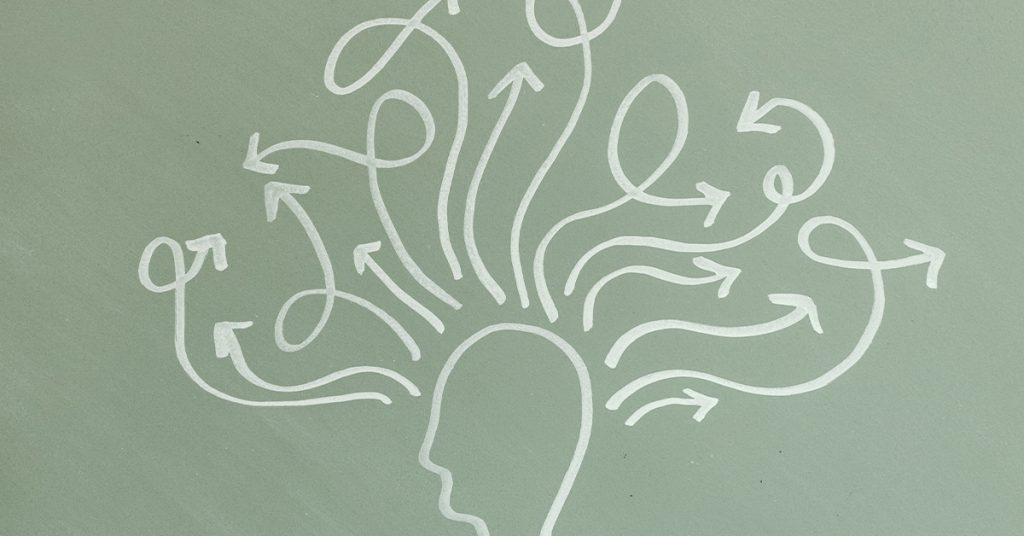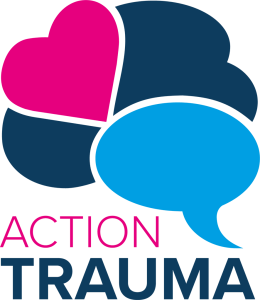Neurofeedback as Therapy for ADHD

Neurofeedback is a computer-aided therapy method for clinical use in which selected parameters of one’s own brain activity (EEG) are made perceptible.
For this purpose, brain waves are measured in real time from the surface of the head (“Neurd’), which influence an audio-visual animation (“feedback”). Because the central nervous system (CNS) permanently analyses allincoming signals from its sense organs for their relevance, the audio-visual neurofeedback signals represent a kind of mirror of its own activities for the brain. Such direct neurofeedback, which is based on evaluated and tested treatment protocols and electrode placement sites, targets on the brain’s ability to regulate itself. Since self-regulation is an essential and fundamental function of the brain, the clinical treatment spectrum broad, in which neurofeedback can be used as a lead therapy or therapy component to alleviate the symptoms of mental disorders and illnesses, for attention and concentration problems and in rehabilitation.
There are various neurofeedback methods, which all follow the principle of EEG measurement and frequency component feedback outlined above, but differ in their implementation, EEG feature extraction and feedback control. So-called “frequency band” methods follow the rules of standardized frequency bands (ranges) within the “classic” EEG spectrum (1-40 Hz) for feature extraction and aim to ensure that the brain reduces activities of certain frequencies and increases others. With neurofeedback training of slow cortical potentials (“SCP”), on the other hand, the activities in very low frequency ranges below 0.1 Hz are controlled. The so-called “Infra-low frequency Neurofeedback” (“ILF-Neurofeedback) has proven to be particularly effective, which in terms of the frequencies of the extracted brain activities represents a combination of “frequency band” and “SCP” training, but beyond that follows a stand-alone, individualized and symptom-based approach. In “ILF Neurofeedback”, for example, the training frequency of the deep SCP activities is individually optimized, and the course of therapy is dynamically adapted to changes in clinical symptoms of the patient/client.
In order to reflect the research findings as broadly as possible, the following section considers studies that have used a variety of neurofeedback techniques – they all have in common that they aim to improve brain regulation via audio-visual training based on specific brain activities in the EEG.
Neurofeedback as a treatment component for ADHD
Attention deficit-/hyperactivity disorder (ADHD) refers to a disorder that already occurs in childhood with symptoms of inattention, impulsivity and possibly hyperactivity, which occur across situations and to an abnormal extent and cause considerable suffering.
ADHD is associated with numerous functional impairments, for example in school, education and/or difficulties in the family and in contact with peers. International epidemiological studies suggest a prevalence of 5.3%1, making it one of the most common disorders in childhood and adolescence. The disorder and its associated functional limitations often persist into adulthood.
ADHD was, after epilepsy, one of the first clinical diagnoses for which Neurofeedback was used already in the 1980s. Since then, Neurofeedback has shown good effects in the treatment of ADHD in many years of clinical experience and numerous published case studies and trials. Accordingly, since 2017, Neurofeedback has been listed in the German S3 treatment guideline of the leading German psychiatric and pediatric societies and associations (DGKJP, DGPPN, Deutsche Gesellschaft fUr Sozialpadiatrie und Jugendmedizin e.V., and others) as a treatment method for ADHD with strong recommendation and moderate evidence2. This represents an enormous breakthrough for the use of Neurofeedback in ADHD.
Neurofeedback as a treatment method for ADHD pursues the approach of alleviating disorder specific symptoms, which is most likely accompanied by a normalization of brain dysregulations. That neurofeedback indeed has a neurophysiological effect on the brain has been confirmed in a recently published, controlled study: the functional connectivity in the brain of subjects was examined with functional magnetic resonance imaging (fMRI) before and after a Neurofeedback session of 30-minutes. Following the Neurofeedback intervention, the fMRI images revealed a significantly increased connectivity between neurons in specific brain regions3. From these results, it can be deduced, among other things, that Neurofeedback not only has a positive effect on the symptoms of diseases but can also induce functional effects in the brain and thus possibly permanently change connectivity patterns such as those that occur in chronic pain. These results support the hypothesis of Neurofeedback as a method of improving self-regulatory capacity in the brain.
State of research: Neurofeedback in ADHD
A total of almost 2,000 published medical research papers can be found under the keyword “Neurofeedback” (PubMed, as of October 2020). These include basic studies on how Neurofeedback works as well as clinical studies, case studies, and reviews on the use of Neurofeedback for a wide variety of indications. Most of the publications refer to the indication areas ADHD, learning and performance problems as well as attention and concentration.
Since the 1980s4, clinical studies with ADHD patients have shown that Neurofeedback significantly improves various parameters of attention and impulse control as well as school performance.
A recent work demonstrated that treatment with Neurofeedback produces lasting and comparable effects to treatment with stimulants such as methylphenidate (Ritalin)6-9. Follow-up studies confirm a sustained improvement in attention and school performance six and 24 months after completion of Neurofeedback therapy1011 These recent studies with high methodological standards confirm the positive results of earlier studies on positive and long-term effects of Neurofeedback therapy in ADHD. We at BEE Medic have also contributed to the research of ILF Neurofeedback therapy in children with ADHD. In cooperation with a Munich-based group of child and adolescent psychiatrists and psychologists, the ILF Neurofeedback treatment results of 251 children and adolescents with ADHD were evaluated. The participants of the study completed an attention test before and after neurofeedback therapy. There was a significant improvement in attention and impulse control after completion of neurofeedback therapy. In addition, significant subjectively perceived improvements in symptoms were reported. Parents and therapists were also consistently positive about the Neurofeedback therapy and the treatment successes.
Summary and Perspective
Neurofeedback is a promising treatment method for ADHD and is more and more included in guidelines and recommendations. Especially ILF Neurofeedback is an effective approach for the treatment of ADHD by improving the brain’s ability to self-regulate. Furthermore, the individualized, symptom-based approach of ILF Neurofeedback makes it possible to address concomitant symptoms in the sense of a complex syndrome. Since ILF neurofeedback is a non invasive, computer-assisted therapy method for ADHD, none of the usual side effects of pharmacological drugs occur during treatment.
Many researchers and also we at BEE Medic are currently working on conducting or supporting elaborate Neurofeedback studies. For further information about Neurofeedback and scientific work, please do not hesitate to contact us.
Please also contact us if you are interested in participating in research on Neurofeedback yourself, for example via a case study in your practice – we would be happy to advise you on this. You can reach us at medwiss@beemedic.de.
BEE Medic
Literature
- Polanczyk, G., et al. (20017): The worldwide prevalence of ADHD: a systematic review and metaregression analysis. Am J Psychiatry, 2007. 164, 942 8.
- Banaschewski, T., Hohmann, S. & Millenet, S. (2017): Langfassung der interdisziplinaren evidenz- und konsensbasierten (S3) Leitlinie ,,Aufmerksamkeitsdefizit-/Hyperaktivitatsstorung (ADHS) im
- Kindes-, Jugend- und Erwachsenenalter”. Arbeitsgemeinschaft der Wissenschaftlichen Medizinischen Fachgesellschaften (AWMF), Registriernummer 028-045, Seiten 105-107. https://www.awmf.org/uploads/tx_szleitlinien/028-045l_S3_ADHS_2018-06.pdf
- Dobrushina, D.R. et al. (2020): Modulation of Intrinsic Brain Connectivity by Implicit Electroencephalographic Neurofeedback. Front. Hum. Neurosci. 14, 1-13.
- Lubar, J.D. & Lubar, J.F. (1984): Electroencephalographic Biofeedback of SMR and Beta for Treatment of Attention Deficit Disorders in a Clinical Setting. Biofeedback and Self-Regulation, 9, 1-23.
- Kaiser, D.A. & Dthmer, S. (2000): Effect of Neurofeedback on Variables of Attention in a Large Multi- Center Trial. Journal of Neurotherapy, 4, 5-15.
- Monastra, V.J., Monastra, D.M. & George, S. (2002): The Effects of Stimulant Therapy, EEG Biofeedback and Parenting Style on the Primary Symptoms of Attention-Deficit/Hyperactivity Disorder. Applied Psychophysiology and Biofeedback, 27, 231-249.
- Fuchs, T., Birbaumer, N., Lutzenberger, W., Gruzelier, J.H. & Kaiser, J. (2003): Neurofeedback Treatment for Attention-Deficit/Hyperactivity Disorder in Children: A Comparison with Methylphenidate. Applied Psychophysiology and Biofeedback, 28, 1-12.
- Rossiter, T. (2004): The Effectiveness of Neurofeedback and Stimulant Drugs in Treating AD/HO.
- Applied Psychophysiology and Biofeedback, 29, 233-243.
- Strehl, U.,et al. (2017): Neurofeedback of Slow Cortical Potentials in Children with Attention- Deficit/Hyperactivity Disorder: A Multicenter Randomized Trial Controlling for Unspecific Effects. Frontiers in Neuroscience, 11, 135.
- Gani, C., Birbaumer, N. & Strehl, U. (2008): Long term effects after feedback of slow cortical potentials and of theta-beta-amplitudes in children with attention-deficit/hyperactivity disorder (ADHD). International Journal of Bioelectromagnetism, 10, 209-232.
- Van Doren, J., Arns, M., Heinrich, H. et al. (2019): Sustained effects of neurofeedback in ADHD: a systematic review and meta-analysis. Eur Child Adolesc Psychiatry 28, 293-305.
- Mackert, J. (2020): Neurofeedback bei AD(H)S- mit ILF-Neurofeedback die Aufmerksamkeit verbessern. neue AKZENTE, 115, 8-12.
- Schneider, H., Mackert, J. & Seuss, S. (2021) Therapeutic Effect of Infra-Low-Frequency Neurofeedback Training on Children and Adolescents with ADHD. In: Brain-Computer Interface,
- Vahid Asadpour ed., lntech□pen Limited, 2021:13, doi: 10.5772/intechopen.97938



